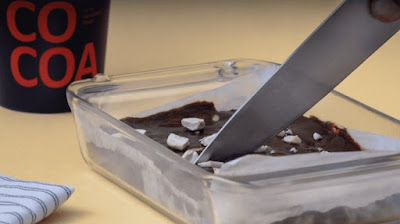All you need to know about desserts
Desserts can be eaten at any time of the day. They come in all shapes and sizes, from cakes and pies to cookies and ice cream.
Features of desserts
Here is everything you need to know about the different features of desserts:
● Texture: Desserts come in various textures, including creamy, crunchy, chewy, and soft. Creamy desserts are smooth and luxurious, like cheesecake or custard. Crunchy desserts have a crispy texture, like brittle or biscotti. Chewy desserts have a bit of resistance, like brownies or caramel. Soft desserts are light and fluffy, like sponge cake or mousse.
● Flavour: Desserts can have a variety of flavours, from sweet to savoury. Some popular sweet flavours include chocolate, vanilla, caramel, and fruit. Savoury desserts often feature cheese or herbs.
● Ingredients: Desserts can be made with various ingredients, including flour, sugar, butter, eggs, cream, fruit, and chocolate. The combination of ingredients determines the flavour and texture of the dessert. For example, chocolate fudge will have a different texture and flavour than a lemon tart.
● Presentation: Desserts can be presented in various ways, from a simple slice of cake to an elaborate dessert buffet. Presentations can include decorations like sprinkles or fruit and plating and serving techniques.
● Occasion: Desserts can be tailored to different occasions, such as holidays or birthdays. For example, pumpkin pie is a popular dessert for Thanksgiving, while a birthday cake is often decorated with candles and frosting.
● Regional variations: Desserts can vary by region or culture. For example, some desserts might feature puff pastry and fruit, while others might feature gelato or tiramisu.
● Nutritional value: Desserts are typically high in sugar and calories, but some can be healthier. For example, fruit-based desserts like fruit salad or sorbet are lower in calories than chocolate cake or ice cream.
● Dessert pairings: Desserts can complement various foods, depending on personal taste and cultural traditions. Chocolate desserts pair well with coffee or hot chocolate. Fruit-based desserts like pies or sorbets pair well with light meals or seafood dishes. Creamy desserts like cheesecake or pudding pair well with rich, hearty dishes like steaks or roasted meats. Spiced desserts like gingerbread or pumpkin pie pair well with savoury foods like roasted vegetables or grilled meats.
● Serving size: Desserts can be served in various sizes, from a small truffle to a large cake. It is important to consider serving size when choosing a dessert, as larger desserts typically have more calories and sugar.
● Preparation time: Desserts can range in preparation time from a few minutes to several hours. Quick and easy desserts, like no-bake cookies or microwave mug cakes, are great for busy weeknights. More elaborate desserts, like a multi-layered cake, may require several hours of preparation.
Conclusion
Desserts are a versatile and delicious part of any meal. Understanding the different features of desserts can help you choose the perfect dessert for any occasion, whether a quick and easy weeknight treat or an elaborate dessert buffet for a special event.



Comments
Post a Comment